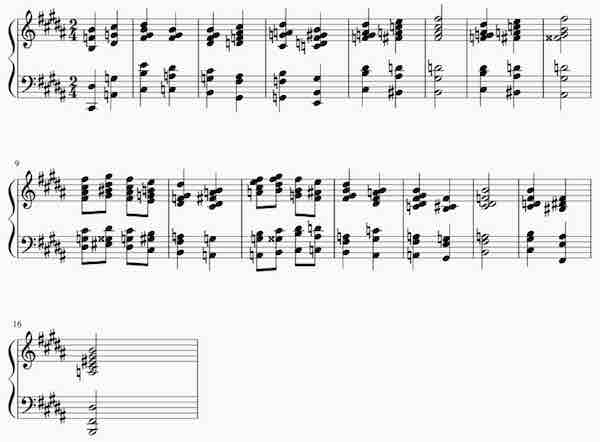Reharmonisation of a tune, using non-functional harmony
In this blog post, I would like to write about the topic of reharmonisation, in particular, harmonisation using non-functional harmony.
I will present an example of reharmonisation of a very simple tune (father Jacob / brother Jacob, brother John), to make it much more interesting, and give it a completely different appearance.
What is non-functional harmony
One might wonder, what is non-functional harmony?
Whilst functional harmony always tends to have functions, such as the tonic (1st, 3rd, 6th grade), dominant (5th, 7th grade), subdominant (2nd, 4th grade), secondary V and much more, non-functional harmony is completely free.
Functional harmony (usually) progresses towards the tonic while establishing (also usually) one or more tonalities. Non-functional harmony omits many traditional harmonic concepts and transcends them.
At this point, it is important to note that definitions of functional harmony always change, and develop (from baroque style counterpoint to Schoenberg’s twelve tone music). Quite frankly, it is not always possible nor senseful to distinguish between those two.
Non-functional harmony, can be as, if not much more, complicated than functional harmony.
Also, non functional harmony is mainly about using your ears (and intuitions) rather than a set of predefined rules. This makes it very interesting, and in the following part of this blog, I will show an example.
Reharmonisation of the tune Father Jacob / Brother Jacob / Brother John
In the case, that you are not familiar with this tune, here it is:

This is the original Father Jacob / Brother Jacob / Brother John tune
As you can see, it is indeed very simple, and does not have any particularly interesting (functional) harmonic features, which makes it a very good contestant to begin experimenting with non-functional harmonies.
Here is my, slightly over-the-top take on harmonising father Jacob.

Father Jacob / brother John meets non-functional harmony
Also, here is the pdf version to download for free.
Choosing the chords
In this example, the only thing given is the melody, so it makes sense to search for chords, which fit to the melody. In order to do that you can interpret the melody as, for example the 13th of a dom7 chord (minus the dominant function, of course).
But there are countless other possibilities, you can use different options, chords, inversions, voicings and much more.
In this example I chose for very complicated chords (mostly), which move in a homophonic way, together with the melody. This is purely a demonstration of what is possible (but, probably, not entirely necessary).
Bass line
An other way, is to think first of a fitting bass line, for example the chromatic line in Bar 2, and then build the chords on that.
Color and mood
One of the most important aspects is to find the right music color, you would like to have, as it does influence the mood. Also, pay attention to the voicing and the register of the notes.
Last but not least, make it (more or less) playable:)
Summary and conclusion
This is an amazing exercise to boost your creativity and break free (for a short time) from all the ‘traditional’ music concepts.
It can lead to many interesting results.
Also, it is interesting to have fusion between functional and non-functional harmonies, as they can complement each other very nicely. An example for this is the II, V, I (2, 5, 1) progression and the end, Bar 15 and 16.
But in the end, it is all about your ears, your interpretation and your ideas. And non-functional harmony is a beautiful tool to make these elements come alive.